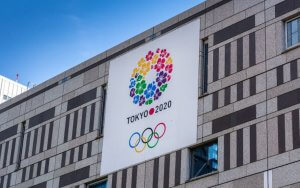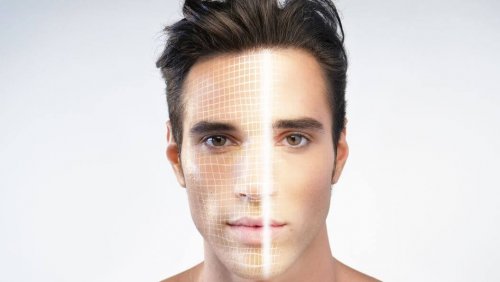The Tokyo Olympic Games and Facial Recognition Systems

The 2020 Tokyo Olympic Games are going to use high-speed facial recognition systems for athletes, journalists, and staff members. This initiative and its stated objectives are to improve security and efficiency while facilitating access to the venues.
People in the know have confirmed that organizers are going to install the system in all of the competition venues. It’s also going to be at the Olympic Village and the press centers. This won’t affect spectators.
They’re also doing this because the Tokyo Olympic Games are going to take place during the summer months. As such, another major goal is to avoid long lines in high temperatures. The people in charge believe that facial recognition is going to allow organizers to speed up their work. Relying on security staff alone to take care of this can result in a much slower process.
Facial recognition is only going to take 0.3 seconds to confirm peoples’ identity. It’ll do this by comparing the user’s face to a previously saved photo of them. The organizers intend for this measure to increase the security at this massive sporting event.

Among other things, this is going to help avoid any unsanctioned or fraudulent entry. As such, the organizers hope that the system is going to solve potential problems, speeding up the security process. They also expect it to reduce wait times and avoid the problem of people using stolen or falsified identity cards altogether.
According to initial tests, this facial recognition system is going to allow for controls that are 2.5 times faster than standard procedures. By “standard procedures,” we mean barcodes and visual controls. Organizers used these in the previous Olympic Games.
“This is the first time that facial recognition will be implemented for all authorized people at all sites.”
–Tsuyoshi Iwasshita-
Modern-day Olympic Games
The NeoFace technology developed by the NEC Corporation is the one that the organizers will use to monitor all authorized people. This includes athletes, officials, staff, and members of the media at more than 40 sites. In other words, we’re looking at the Olympic Games that are going to make the most extensive use of technology.
In fact, it’s the first time that they are using facial recognition technology for the security of an event of this type. Remember that the Tokyo Olympic Games are going to take place throughout the entirety of the Tokyo metropolitan area. It’s going to be necessary to authenticate peoples’ identities at more than 40 places throughout the city. This extra level of security is going to be present at all the Tokyo 2020 events. They’re also going to use it for the Paralympic Games – that’ll be the first time for both of these events that they’ll use such measures.
This raises some red flags with regard to privacy, though. That’s especially true since the organizing committee for the Tokyo Games, the International Olympic Committee, and the NEC Corporation have all remained silent on the issue of how the images are going to be stored. They haven’t said anything about the IT security measures they have in place to protect them either.
The cutting edge of global facial recognition technology
The NEC Corporation, a Japanese company, asserts that it has the best facial recognition technology in the world. Its recognition program uses a system called NeoFace. This works by sequentially analyzing faces in live security sequences and looking for matches in its database.
This leading facial recognition technology has already been tested in the last Olympic Games, which were held in Rio in 2016. In fact, its biometric technology has already been implemented in various capacities in 70 countries, including some international airports.

How it works
The system is going to link the information from the photographs of the authorized assistants with their identification cards. This is going to work by simply tapping the card on the reader. That being said, everyone is going to need to submit their photographs to a database before the competition starts.
The security personnel will still be there, but the system should make their jobs easier. Instead of the security personnel checking every person, the facial recognition technology is going to scan their faces. This will speed up the entry process.
Whatever happens, we’re sure that many people are going to be interested in how organizers use facial recognition technology at the 2020 Tokyo Olympic Games. That goes for both its detractors and supporters who are going to be monitoring the process. Everyone is going to want to know whether it’s an effective tool for this type of work.
You’ll probably rest easier knowing that these facial recognition systems are supposed to effectively eliminate entry with fake IDs. Supporters also claim they’re going to reduce wait times for authorization and lower the stress levels of the athletes.
The 2020 Tokyo Olympic Games are going to use high-speed facial recognition systems for athletes, journalists, and staff members. This initiative and its stated objectives are to improve security and efficiency while facilitating access to the venues.
People in the know have confirmed that organizers are going to install the system in all of the competition venues. It’s also going to be at the Olympic Village and the press centers. This won’t affect spectators.
They’re also doing this because the Tokyo Olympic Games are going to take place during the summer months. As such, another major goal is to avoid long lines in high temperatures. The people in charge believe that facial recognition is going to allow organizers to speed up their work. Relying on security staff alone to take care of this can result in a much slower process.
Facial recognition is only going to take 0.3 seconds to confirm peoples’ identity. It’ll do this by comparing the user’s face to a previously saved photo of them. The organizers intend for this measure to increase the security at this massive sporting event.

Among other things, this is going to help avoid any unsanctioned or fraudulent entry. As such, the organizers hope that the system is going to solve potential problems, speeding up the security process. They also expect it to reduce wait times and avoid the problem of people using stolen or falsified identity cards altogether.
According to initial tests, this facial recognition system is going to allow for controls that are 2.5 times faster than standard procedures. By “standard procedures,” we mean barcodes and visual controls. Organizers used these in the previous Olympic Games.
“This is the first time that facial recognition will be implemented for all authorized people at all sites.”
–Tsuyoshi Iwasshita-
Modern-day Olympic Games
The NeoFace technology developed by the NEC Corporation is the one that the organizers will use to monitor all authorized people. This includes athletes, officials, staff, and members of the media at more than 40 sites. In other words, we’re looking at the Olympic Games that are going to make the most extensive use of technology.
In fact, it’s the first time that they are using facial recognition technology for the security of an event of this type. Remember that the Tokyo Olympic Games are going to take place throughout the entirety of the Tokyo metropolitan area. It’s going to be necessary to authenticate peoples’ identities at more than 40 places throughout the city. This extra level of security is going to be present at all the Tokyo 2020 events. They’re also going to use it for the Paralympic Games – that’ll be the first time for both of these events that they’ll use such measures.
This raises some red flags with regard to privacy, though. That’s especially true since the organizing committee for the Tokyo Games, the International Olympic Committee, and the NEC Corporation have all remained silent on the issue of how the images are going to be stored. They haven’t said anything about the IT security measures they have in place to protect them either.
The cutting edge of global facial recognition technology
The NEC Corporation, a Japanese company, asserts that it has the best facial recognition technology in the world. Its recognition program uses a system called NeoFace. This works by sequentially analyzing faces in live security sequences and looking for matches in its database.
This leading facial recognition technology has already been tested in the last Olympic Games, which were held in Rio in 2016. In fact, its biometric technology has already been implemented in various capacities in 70 countries, including some international airports.

How it works
The system is going to link the information from the photographs of the authorized assistants with their identification cards. This is going to work by simply tapping the card on the reader. That being said, everyone is going to need to submit their photographs to a database before the competition starts.
The security personnel will still be there, but the system should make their jobs easier. Instead of the security personnel checking every person, the facial recognition technology is going to scan their faces. This will speed up the entry process.
Whatever happens, we’re sure that many people are going to be interested in how organizers use facial recognition technology at the 2020 Tokyo Olympic Games. That goes for both its detractors and supporters who are going to be monitoring the process. Everyone is going to want to know whether it’s an effective tool for this type of work.
You’ll probably rest easier knowing that these facial recognition systems are supposed to effectively eliminate entry with fake IDs. Supporters also claim they’re going to reduce wait times for authorization and lower the stress levels of the athletes.
All cited sources were thoroughly reviewed by our team to ensure their quality, reliability, currency, and validity. The bibliography of this article was considered reliable and of academic or scientific accuracy.
This text is provided for informational purposes only and does not replace consultation with a professional. If in doubt, consult your specialist.








